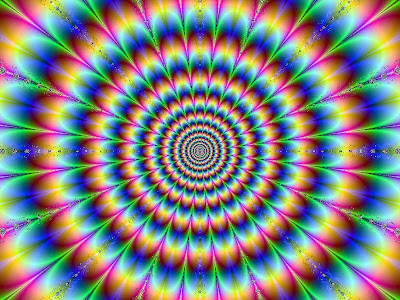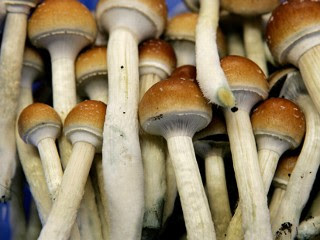Answers by Dharmachari Seven and Justin Choo
Greek goddesses (devas) dance with Apollo (Wikipedia)
(1) Is Mara the most powerful deva, given the fact that he is the king of the highest Deva Realm?
Mara (the personification of Death) is not the king or chief of the highest deva world. That is said only in the sense that all worlds (with the exception of the Pure Abodes) are ruled over by death. Beings there in all the heavens, human worlds, and hellish destinations eventually pass away to be reborn elsewhere according to their karma. There is another being known as Mara-Deva, who is a beautiful "angel" or "godling" who, it is said, takes personal offense that anyone attempts to free him, her, or itself (Brahmas or Gods are beyond sex, neither male or female) from the Wheel of Rebirth (Samsara).
(2) Why is Mara not supportive of those practicing Dharma (e.g., in the story of the Arhat Uppa Gupta, who existed 300 years after Buddha)?
The way to free oneself from the Wheel of Rebirth is to practice the Dharma and develop virtue, concentration, and liberating-wisdom.
(3) Can devas interfere with one's practice of Dharma? If so, how?
Yes, not all godlings are good. Just like humans (and the human state being a good one) in the human-world, Greek-style gods and goddesses are jealous, angry, lustful, deluded, vain, and so on. While they have great capacities and potentials (in addition to beauty and longevity), they are intoxicated with pleasure, ego, and delusions of grandeur. Just like humans, devas can go terribly wrong. Mara Deva is possessed of a pernicious wrong view, fancying himself the lord of the sense world. He is not. But the idea impels him to obstruct anyone from practices leading to liberation. Just as even a human, a ghost, a hellion, or an insect can hinder, annoy, or frighten one, a deva has the capacity to interfere with one's practice.
(4) Where do our unwholesome thoughts come from? Can they be influenced by an unseen being?
There is not a time in the past when beings were not ensnared by lust (lobha), provoked by aversion and fear (dosa and bhava), and shrouded by delusion (moha). They may be repressed, suppressed, or lulled for a time (even a lifetime). Nevertheless, they are influencing one. And they can be aroused, provoked, or engendered by others. A wholesome individual can be corrupted if that individual is not guarding his/her senses, if mindfulness is lacking, if concentration is off, or if wrong views are accepted and acted on. Whether seen or unseen, a being is able to arouse, provoke, or enrapture one by any number of means not requiring any special power.
(5) Can more than one stream of consciousness co-exist in one physical body? What can we do to prevent that from happening to us?
Possession can and does take place when mindfulness is lacking or when one does not practice wise association (the company of good and inspiring companions). This is done by the will of unseen beings but can be protected against and reversed once it's recognized. Seeing a monk about the suspected problem would be a good start to prevent or reverse the situation. Parittas (or protective chants) are often done to protect from this eventuality.
Celestial devas and gods depicted in Indian art
(6) Why is Maha Brahma also called the Creator God? Does he play a role in the beginning of a new world system? Do we and devas basically look alike (i.e., have a face with two eyes, two ears, one nose, one mouth, two hands, and two legs)? Is it true that in the beginning of a new world system, the brahmas descend to the earth's surface and gradually evolve to become human beings?
It's not clear why this is one question, but brahmas, including Maha Brahma, weild the power of creation. That is, they can make things by seemingly magical means -- simply wishig or willing it. They are creators in that sense. There are many things they cannot do and many things they cannot create. For instance, they cannot reverse the Three Marks of Existence, which is to say they cannot make things permanent, satisfactory, or personal because in truth they are not. At the birth of a world system, which is an impersonal process, the Maha Brahma (great god) is reborn first. This is due to past karma. That being does not know how the arising took place or why and often comes under the delusion that it was uncreated and unborn and therefore is the creator, the one who gives birth to the entire universe. There are many brahmas and devas higher and greater, yet Maha Brahma is not aware of them. So any claims of omniscience and omnipotence are at best delusions, possibly exaggerations, or at worst untrue boasts.
Devas often have the power of transformation to assume the form they wish. It's not clear what their default form is. Some are anthropomorphic, some are ephemeral, some are amorphous light. But when appearing to human beings, they tend to assume the form of very beautiful, lithe, and delicate beauties with a face, two eyes, and so on.
It is true that after a world dissolution, a very long period of time follows. At this time beings are mostly born in a particular brahma world, where they feed on joy, fly about, enjoy long lives, and are luminescent. This is all explained in the Aganna Sutra, which explains how beings eventually "fall" from that status, devolve, and degrade to a grosser/baser form as humans due to increasing decadence. This takes place over an almost inconceivable period of time and may represent a figurative and powerful explanation of the harm in unskillful karma rather than a human genesis.
 Ghosts and other suffering beings in unfortunate destinations
Ghosts and other suffering beings in unfortunate destinations
(7) Who are the beings who torture the suffering beings in the hells? What/who gave them the right and do they accumulate bad karma for doing the job?
There are different ways of understanding this. One's own deeds torment one (as by remorse, regret, guilt, or experiencing the bitter and painful karmic results of those actions). This may give rise to phantom "beings" performing the torture. Alternatively, there are angry beings one may attract by virtue of one's fear, remorse, guilt, and so on. Those beings -- angry, deluded, and greedy -- having the opportunity to harm do harmful things. It is to their detriment and to the detriment of the ones they harm. No one has given them "the right" to do these things. It may also be that Yama, king of the dead, if this is a literal being, attempts to direct the types of torment or calls upon hellions and denizens of lower worlds to inflict harm in an attempt to extirpate the heavy karma that has led to one's rebirth in those many and varied realms. It is perhaps possible to make sense of this by comparing it to modern American prisons. One suffers there, and much of that suffer one brings on oneself. One is made to suffer there by attracting that into one's experience. Guards, "shot callers," gang leaders, angry rivals, and even the warden may have a vendetta against one, or an instantaneous dislike of someone (based on that person's karma). And in those capacities, one is harmed and tormented. This can be motivated by others' anger, delusion, greed, or simply in the exercise of their capacity (job) in that world with no particular intention to torment.
(8) Plants and trees have life but no consciousness. Can the congregation of the Five Aggregates happen by chance? Where is the origin of each of the Five Aggregates?
As the Buddha explained to one particularly inquisitive disciple, there is no end of questions. It is better to practice because before all of one's questions could possibly be answered, one would surely die. If instead of questioning, one were to practice the Dharma, wisdom that could answer all of one's questions and more might arise. Plants do have some consciousness. That is, they can react to their environment. They face and follow the sun. They may not have active cerebral activity and contemplation. But consciousness seems to infuse all things, even if those things are not originating consciousness. Whether the Five Aggregates of existence and clinging (form, feeling, perception, formations, and consciousness) come together by chance or not depends on what is meant by "chance." They are interdependent -- not having independent existence -- and impersonal. There is no being behind them, apart from them, or within them. They co-originate depending on one another. For instance, feeling arises dependent on contact. Contact can only take place because past karma gives rise to form. On account of contact, sensation and perception take place, leading to awareness. All of this is explained in detail in the doctrine of Dependent Origination (Paticca samuppada).
(9) What is the difference between "craving not to live" (the opposite of "craving for continued existence") and "dispassion for life" (nimbida)"?
Generally speaking, beings crave for continued existence and act accordingly. They fear death yet cling to the Wheel of Life and Death (Samsara), which leads to repeated rebirth and also repeated and painful "redeath." This is motivated by craving (tanha) for pleasant feeling. When such desires are frustrated, when one does not get what one wants or when one gets what one very much dos not want, the typical reaction is a "craving for nonexistence." One wishes to have the world stop so that one can get off the merry-go-round. This leads to suicide when relationships end or when one meets with insufferable misery, as happens not infrequently.
Conversely, because in reality, according to dharma (Truth, not to be confused with The Dharma, "the doctrine" that attempts to encapsulate the Truth) and not otherwise, things are unsatisfactory, impermanent, and impersonal (not self), seeing them -- even for a moment -- as they really are leads to dispassion. In the absence of the normal craving, which is always coupled with delusion and aversion, one forms a "dispassion for life" that is quite different from aversion (dosa, "hate"). It's similar in function but rooted in wisdom and as such is of benefit. When the mind is dispassionate, more liberating-wisdom ripens. Ordinary aversion is rooted and delusion and does not give rise to liberating wisdom. That is the principal difference.
(10) How do devas have sex or its equivalent? I heard devas have no sexual organ, how do they "do it" then?
The word "deva" is difficult to understand because it is such a general term. It generally means "spontaneously born" (opapatika) and "luminescent." Most devas have subtle, fine-material bodies. They emit light (to varying degrees based on their karma, glory, status, other variations such as mood and condition, e.g., before they pass away, they suddenly lose their luster). They live on many different planes. These planes are quite different. And their are more of them than any kind of world. Most realms in the 31 Planes of Existence are devas. But the world is not mostly populated with devas. Many more beings are unfortunately reborn to miserable destinations. The heavens are spacious; the unfortunate destinations are crowded and cramped. It is somewhat unfortunate that so many of these beings are called "devas" because no distinction is made where it is merited. There are bhumi-devas (earth godlings who live in forests above trees, within plants or groves, interdependent on those plants, or associated with rivers and bodies of water), celestial-devas (identified with planets and realms and natural phenomena), and exalted "devas" superior to the Gods (Brahmas). They are very different, not all anthropomorphic, but similar in that they are spontaneously reborn (mind-born, without the intermediary of parents and gestation). They can be brighter than the sun, than stars, than supernovas. In one sutra, the Buddha makes a comparison between a glow worm a beryl gem and the sun in an analogy that also serves to state the difference in brilliance and radiance of different beings he knows personally.
With all these differences, it is difficult to speak of "devas" in general. They experience a great deal of pleasure and pleasant feeling. Bhumi-devas and those of the lower celestial worlds (like Greek nature spirits and godlings, nymphs and deities) may be obsessed with sensuality and sex, and with anthropomorphic forms they are born with or assume by their power of transformation they can engage in it they way humans or bonobos do.
The Brahma World and beyond, where most types of devas reside, are without gender and without sex. There is a great deal of pleasure, more than humans are capable of imagining, but it does not come from sexual congress.
More Answers
(1) Is Mara the most powerful deva, the fact that he is the king of the highest deva realm?
Mara is one of the two most powerful devas in the highest sensual realm. The righteous king is Vasavatti Deva, and the other is this Mara Devaputta.
(2) Why is Mara not supportive of those practicing Dharma? (e.g., in a story of Arahant Uppa Gupta, who existed 300 years after Buddha's passing away)
Mara was jealous of those who could attain jhana as they would be reborn higher than him. Mara has great power that he can enjoy objects created by others for him. The story goes that Upagotta had subdued Mara and he had promised not to disturb any follower of the Buddha again.
(3) Can devas interfere with our practice of Dharma? If so, how?
Devas are those beings in higher realms than us. There are good and not so good devas. Those devas who are our "neighbors" can influence our worldly lives. Buddhists perform chanting and puja at the Bodhi trees for purpose of requesting worldly favors and protection from them. Before formal chanting, we always invite the devas to participate and listen and share our merits. This is the Buddhist way of seeking "spiritual" protection.
(4) Where do our unwholesome thoughts come from? Can it be influenced by an unseen being?
The "unseen being" is our "ignorant and deluded mind."
(5) Can more than one stream of consciousness co-exist in one physical body? What can we do to prevent that from happening to us?
"Stream" means "continuous flow." There can only be one continuous flow. It is just like electrical current. Our consciousness is in a continuous flux comprising a continuous flow of "thought moments." Each thought moment is referred to as a unit of the mind. Each unit of the mind has seven major currents which cause the continuous flow of 17 waves. One cycle is one beat of the mind, just like the heart beat, but millions of times faster. It is so fast that we have been deceived to believe that we have permanent and unchanging souls.
(6) Why is Maha Brahma also called the Creator God? Does he play a role in the beginning of a new world system? Do we and devas basically look alike (i.e., have a face with two eyes, two ears, one nose, one mouth, two hands, two legs)? Is it true that in the beginning of a new world system, the brahmas descended to the earth's surface and gradually evolved to become human beings?
Maha Brahma is called the creator god only by the Hindus. Maha means great, and Brahma means god. The story goes that this Brahma was the first to descend to the lower realm and feeling lonely wished for companions. Later others also descended and the self-fufilling prophecy is created. This Brahma thought that he had great power in creating the others, while the others thought that this Brahma really created them; thus he became Maha Brahma!
The beginning of the world and life are described in the Brahmajala Sutra (the first sutra in the Digha Nikaya) and the Aganna Sutra (Vol 3 Digha Nikaya).
From the description of the Planes of Existence, devas are also sensual beings which I would assume that they are similar to us, except more refined.

 Latin American leaders say the U.S. must quickly fix the financial crisis it created before the rest of the world's hard-won economic gains are lost.
Latin American leaders say the U.S. must quickly fix the financial crisis it created before the rest of the world's hard-won economic gains are lost.































































































































































































































































